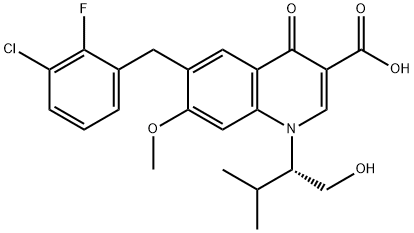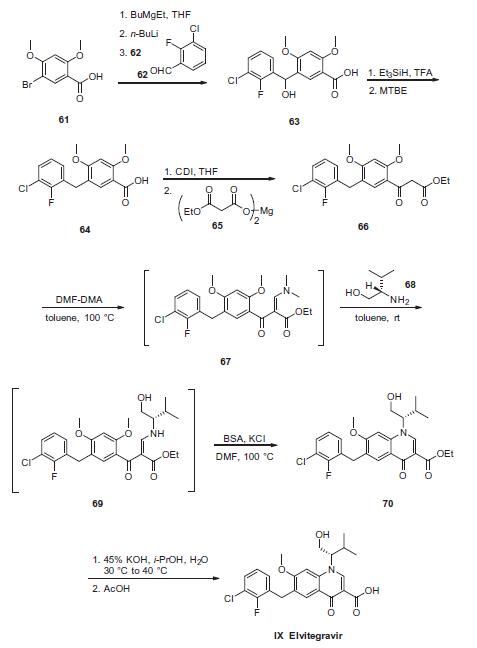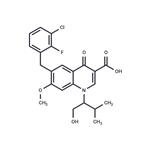
Elvitegravir
- Product NameElvitegravir
- CAS697761-98-1
- CBNumberCB02464875
- MFC23H23ClFNO5
- MW447.88
- EINECS1592732-453-0
- MDL NumberMFCD11846134
- MOL File697761-98-1.mol
Chemical Properties
| Melting point | 93-96°C |
| Boiling point | 623.6±55.0 °C(Predicted) |
| Density | 1.357±0.06 g/cm3(Predicted) |
| storage temp. | Refrigerator |
| solubility | DMSO (Slightly), Methanol (Slightly) |
| pka | 0.44±0.20(Predicted) |
| form | Solid |
| color | Off-White to Pale Yellow |
| optical activity | [α]/D -26 to -34°, c =0.5 in methanol |
| InChIKey | JUZYLCPPVHEVSV-LJQANCHMSA-N |
| SMILES | N1([C@H](CO)C(C)C)C2=C(C=C(CC3=CC=CC(Cl)=C3F)C(OC)=C2)C(=O)C(C(O)=O)=C1 |
| CAS DataBase Reference | 697761-98-1 |
| FDA UNII | 4GDQ854U53 |
| ATC code | J05AJ02 |
| UNSPSC Code | 12352200 |
| NACRES | NA.25 |



